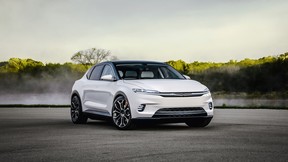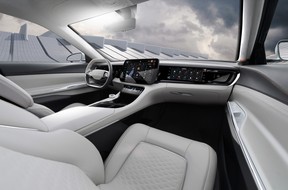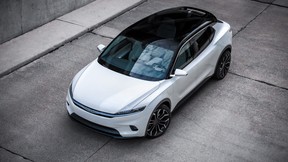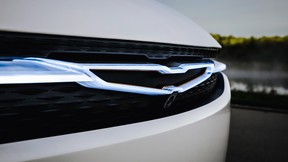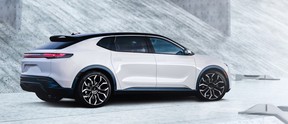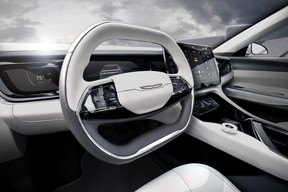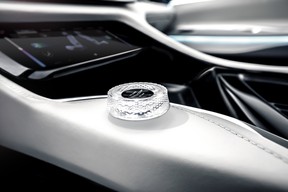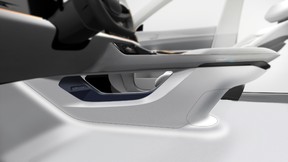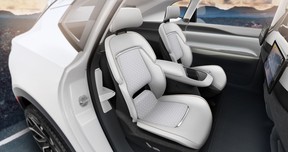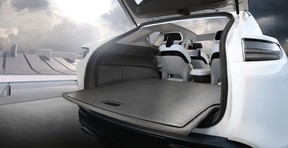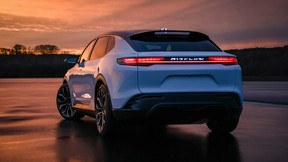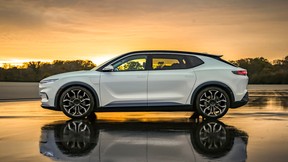Revealed at CES 2022, the Airflow is a harbinger of the company’s first electric vehicle due in 2025
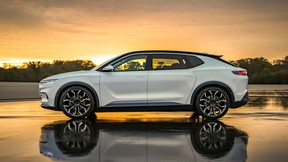
Article content
Chrysler’s original Airflow was a revelation when it was introduced in 1934. Not only was it the first Chrysler streamlined in a wind tunnel — after the company’s engineers found that their typical two-box designs were actually more aerodynamic running backward — but it was also the company’s first attempt at a unibodied car. The former improved fuel economy while the latter allowed an almost perfect 54-46 front-to-rear weight distribution that compared very favourably with the typical 75-25 distribution of its former two-box designs.
Advertisement
This advertisement has not loaded yet, but your article continues below.
Article content
Walter P. Chrysler thought Airflow technology would revolutionize the automobile industry. Unfortunately, all its high-tech was too much, too fast for the conservative consumers of the day, and the Airflow was such a dismal failure that it was discontinued in 1937.
Let’s hope its namesake — being introduced at this year Consumer Electronics Show in Las Vegas — doesn’t suffer the same fate. Like the original, this Airflow — still a concept, by the way — pushes a lot of envelopes.
For starters, it is the harbinger of Stellantis’ commitment to launch its first battery-electric vehicle in 2025, and to offer a full battery electric portfolio by 2028. For another, the styling — seemingly a cross between Audi’s Q4 and Ford’s Mustang Mach-E — “represents the start of the brand’s journey toward that fully electrified future.”
Advertisement
This advertisement has not loaded yet, but your article continues below.
Article content
That future, says Chris Feuell, Chrysler’s Chief Executive Officer, is powered by 150-kilowatt — 201-horsepower — electric motors on each axle and a range of somewhere around 350 and 400 miles (560 to 640 km) on a fully charged battery. Officially, Chrysler isn’t releasing any further specifications, but one of the slides accompanying the concept’s presentation claims an overall efficiency of 295 watt-hours per mile, which works out to Airflow boasting a 118-kWh battery, large(-ish) for this segment. The company also says that platform could accommodate larger electric drive motors for the expected — the company actually says “future” — high-performance versions that are almost guaranteed to follow.
Advertisement
This advertisement has not loaded yet, but your article continues below.
Article content
Also part of that future is ever more customizable interiors. For one thing, the AirFlow all but does away with physical buttonry and analogue controls. Unlike other marques which strive to make the interior one unending touchscreen, however, Chrysler is going for a more individualized touchscreen experience, all passengers having (almost) complete control of their environment, from multifunction seats to a complete spectrum of colour options for the omnipresent ambient lighting. Officially, in the unlikely case you like more flowery language than my own, Chrysler says the interior is “accented by a light and calming colour palette that evokes an open, airy lounge area that delivers a comfortable space between home and work.”
Advertisement
This advertisement has not loaded yet, but your article continues below.
Article content
-
![Stellantis shows off 4 new battery-driven platforms during EV day event]()
Stellantis shows off 4 new battery-driven platforms during EV day event
-
![Mystery electrified Chrysler crossover appears on EV Day]()
Mystery electrified Chrysler crossover appears on EV Day
It’s all part of the Airflow’s STLA SmartCockpit — powered by software architecture Stellantis calls STLA Brain — which also enables STLA AutoDrive (which is Stellantis’ name for Level 3 autonomous driving) and over-the-air updates. Personally, as my doddering years edge ever closer, I’m much more impressed with the cargo area’s power-operated load floor that promises pain-free hefting of suitcase into trunk.
Most important, of course, is how Chrysler customers respond to all this leading-edge technology. Will they embrace this new Chrysler? Or will this Airflow, like the last, be too avante garde ? One thing’s for sure: Chrysler has never forgotten the lesson of the original. After its demise in 1937, Chrysler didn’t attempt another unibody chassis until 1960. And today, even as it touts an electrified future, Stellantis is one of the automakers who has not specified a date for the extinction of its ICE-powered lineup.
Stay connected with us on social media platform for instant update click here to join our Twitter, & Facebook
We are now on Telegram. Click here to join our channel (@TechiUpdate) and stay updated with the latest Technology headlines.
For all the latest Automobiles News Click Here

